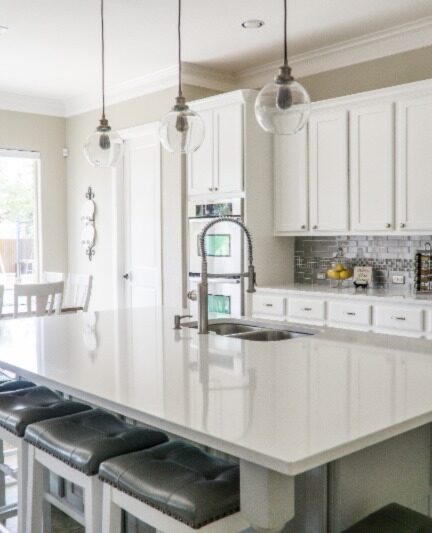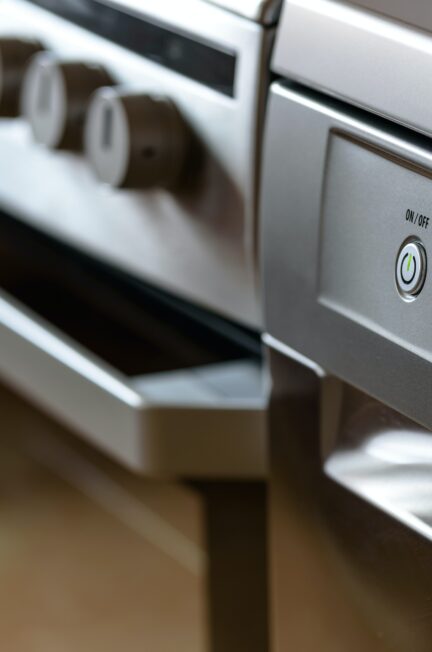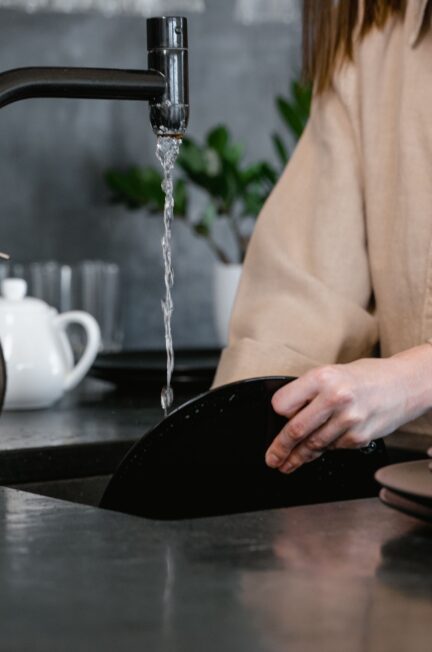We’re glad you’re here to read our informative article, “Stainless Steel Grades Used for Kitchen Appliances: Understanding Quality and Durability.” In the busy world of kitchen appliances, stainless steel has emerged as a representation of maturity, toughness, and modernity. Stainless steel, however, is not all created equal. Understanding the various grades of stainless steel is crucial for making well-informed decisions for your kitchen, from gleaming refrigerators to modern cooktops.
In this article, we’ll examine the various stainless steel grades frequently found in kitchen appliances and shed some light on their distinct qualities, durability, and general level of excellence. Prepare to outfit your kitchen with durable, stylish appliances that will last for years.
What Grade Of Stainless Steel Is Used For Kitchen Appliances?
Stainless Steel Basics
The outstanding metal known as stainless steel is renowned for its exceptional qualities, making it a common choice for a variety of applications, especially in kitchen appliances. The term “stainless steel” refers to a material that is primarily made of iron and contains at least 10.5% chromium. Additional ingredients like nickel or manganese improve its performance even more.
Outstanding corrosion resistance, which guards against rust and stains brought on by exposure to water and air, is one of stainless steel’s key qualities. This property guarantees that stainless steel kitchen appliances continue to look slick and lustrous despite frequent use and cleaning.
Stainless steel also has exceptional heat resistance, making it the perfect material for kitchen appliances that are heated up during baking or cooking. Durability and longevity are guaranteed by its capacity to withstand intense heat without warping or losing its structural integrity.
Stainless steel is a highly dependable and aesthetically pleasing material for kitchen appliances because of its special combination of corrosion resistance and heat resistance. It provides both functionality and timeless appeal.
Common Stainless Steel Grades for Kitchen Appliances
Three of the most popular stainless steel grades used in kitchen appliances are 304, 316, and 430; each has unique properties that meet different needs.
Due to its high corrosion resistance and suitability for general kitchen applications, stainless steel grade 304, also referred to as “18/8” stainless, contains 18% chromium and 8% nickel. It is a popular option for sinks, cookware, and kitchen utensils due to its adaptability and affordability.
However, stainless steel grade 316, also known as marine-grade stainless, has an extra 2% to 3% magnesium, which offers superior corrosion resistance, particularly in environments with a lot of salt or chemical exposure. Grade 316 is frequently used in marine-inspired kitchen appliances and outdoor kitchen setups due to its exceptional durability and resistance to crevice corrosion and pitting.
Although less corrosion-resistant than grades 304 and 316, stainless steel grade 430 has excellent heat and oxidation resistance. Range hoods, oven liners, and refrigerator exteriors are just a few examples of less expensive kitchen appliances that frequently use them.
The choice of a stainless steel grade for kitchen appliances is based on various considerations, including the appliance’s intended use, available funds, and the desired level of corrosion resistance. This ensures that each grade has a unique set of advantages and applications.
Grade 304 Stainless Steel
Due to its exceptional corrosion resistance and flexibility, grade 304 stainless steel is the most widely used and well-liked stainless steel grade for kitchen appliances. This grade, which contains 18% chromium and 8% nickel, prevents corrosion and staining even when exposed to water and the acidic materials frequently found in the kitchen by forming a stable and protective chromium oxide layer on its surface.
Because of its exceptional corrosion resistance, it is a great option for many kitchen applications. Grade 304 ensures durability and a polished appearance in sinks despite regular water exposure. It offers excellent heat resistance in cookware and keeps its shine even after frequent use. Furthermore, grade 304 is ideal for refrigerator exteriors because it keeps a smooth, hygienic surface.
Past kitchen machines, review 304 is utilized in nourishment preparing hardware, countertops, and backsplashes. It is the capacity to resist both dampness and tall temperatures whereas being simple to clean and keep up ensures its proceeded ubiquity within the culinary world.
Grade 316 Stainless Steel
With an additional 2% to 3% magnesium content, grade 316 stainless steel is a higher-grade variant that offers superior corrosion resistance, especially in corrosive environments. High-end kitchen appliances and areas exposed to saltwater, such as coastal areas, benefit greatly from the additional molybdenum’s improved resistance to corrosion in crevices and pits.
Grade 316 is frequently used in high-end kitchen appliances, outdoor kitchens, and marine-inspired appliance designs because of its increased durability and capacity to withstand corrosive elements. This ensures lasting performance and aesthetics under difficult circumstances.
Grade 430 Stainless Steel
When it comes to less noticeable parts of kitchen appliances like range hood exteriors or refrigerator back panels, grade 430 stainless steel is a more cost-effective option. Although it provides good heat and oxidation resistance, it is less corrosion-resistant than grades 304 and 316. Because it lacks nickel, grade 430 is less able to form a barrier to prevent corrosion than its higher-grade counterparts. Consequently, continued exposure to moisture or acidic substances over time may result in staining and surface corrosion.
Due to these drawbacks, grade 430 is typically used in applications where aesthetics and corrosion resistance are not crucial considerations, enabling manufacturers to provide consumers with more reasonably priced kitchen appliances.
Factors Influencing Stainless Steel Grade Selection
Several essential factors play a significant role in the decision of which stainless steel grade to use for kitchen appliances. The budget is important because stainless steels of higher grades, like 304 and 316, are frequently more expensive than grade 430. Manufacturers and customers compare the price to the desired level of durability and corrosion resistance.
Additionally, aesthetics matter because some grades, like 304, look sleek and polished and are therefore preferred for visible surfaces in high-end kitchen appliances. However, grade 430 might be more economical for less visible components.
To determine the grade, specific functional requirements are essential. The superior corrosion resistance of grades like 316 becomes a crucial factor if an appliance will be used in harsh or corrosive environments. Overall, for each distinct kitchen appliance application, the choice of stainless steel grade is a careful balancing act between performance, aesthetics, and financial considerations
Conclusion
As a result, it’s critical to comprehend the various stainless steel grades used in kitchen appliances to ensure the ideal balance between quality and durability. Every grade has a unique set of benefits, from grade 304’s resistance to corrosion to grade 316’s improved performance in challenging conditions. Grade 430 offers a more affordable option, while higher-grade steels like 304 and 316 meet particular functional and aesthetic needs. With this information at hand, customers can choose kitchen appliances that suit their requirements and preferences.



